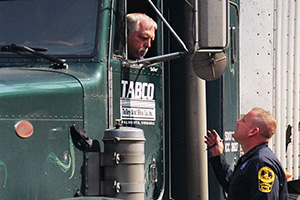Senior Reporter
Law Enforcement Disparities Create Uneven Playing Fields, Study Shows

State law enforcement disparities create uneven safety playing fields for carriers that have different operating patterns and mileage exposure, according to an American Transportation Research Institute study released July 31.
The different priorities and violation issuance rates across states dramatically undermine the uniformity of the “supposedly standardized” Compliance, Safety, Accountability assessment program, ATRI said.
“By simply crossing into an adjoining state, carrier BASIC scores can change markedly,” ATRI said in a statement. “For example, ATRI’s model calculated one carrier’s hours-of-service percentile decreasing by 4.2 points, but their vehicle maintenance percentile increasing by 12.2 points if state violation rates were normalized.”
The seven Behavior Analysis and Safety Improvement Categories, or BASICs, quantify the on-road safety performance of carriers and drivers. They help to identify candidates for interventions, determine the specific problems that a carrier or driver exhibits and can be used to assess whether problems are improving or worsening.
“Until these disparities are rectified, peer-based comparisons within CSA’s scoring system will continue to be flawed and of little value as a tool for monitoring carrier and driver safety performance,” Brett Sant, Knight Transportation’s vice president of safety and risk management and a member of ATRI’s Research Advisory Committee, said in a statement.
“Despite the uniformity of the Safety Measurement System in its calculation of BASIC scores, the intensity and focus of enforcement activities is largely at the discretion of each state. This has resulted in 50 or more different enforcement programs and strategies that are used to populate a uniform score [within each BASIC] of nationwide performance,” the report says.

